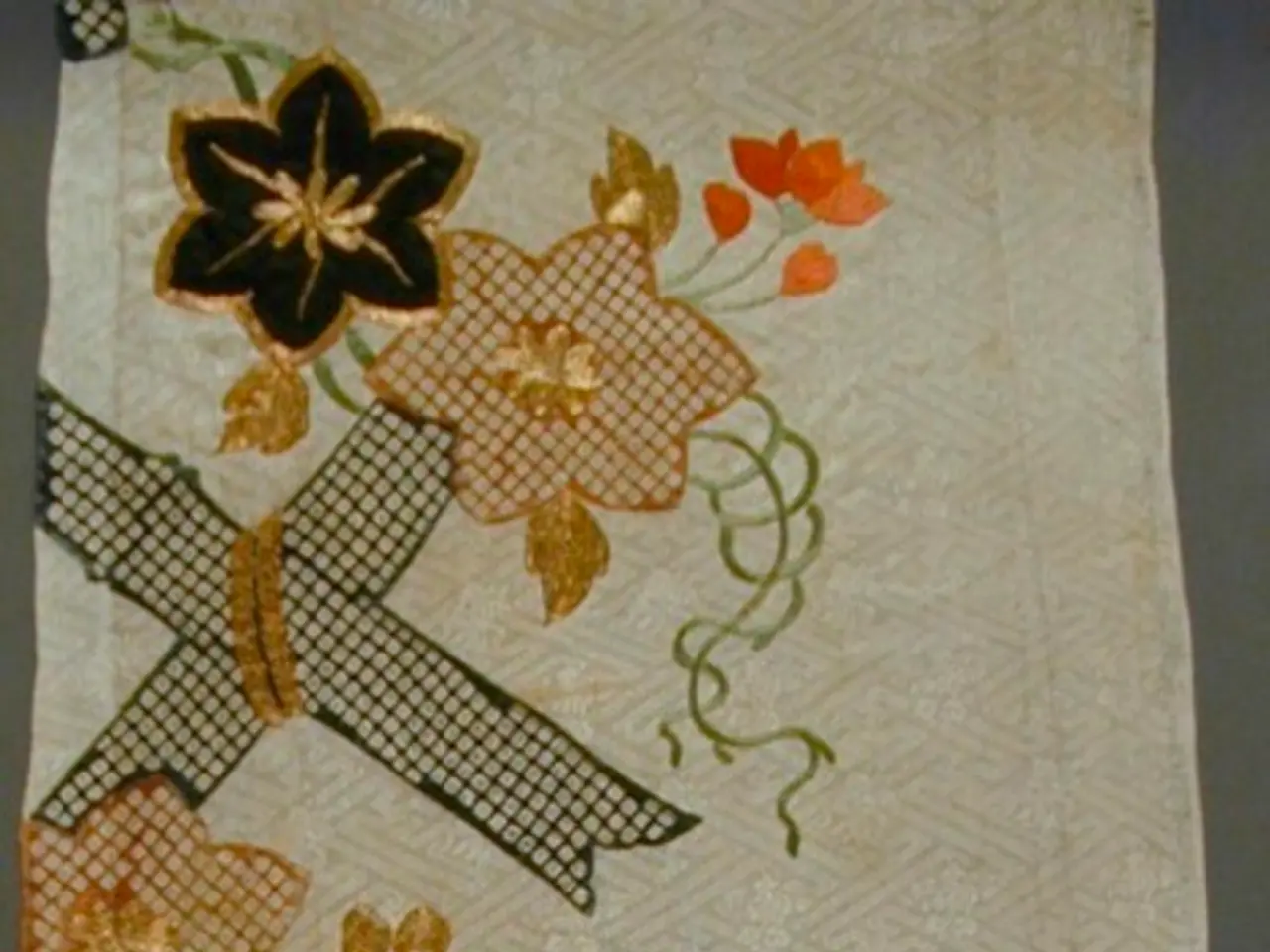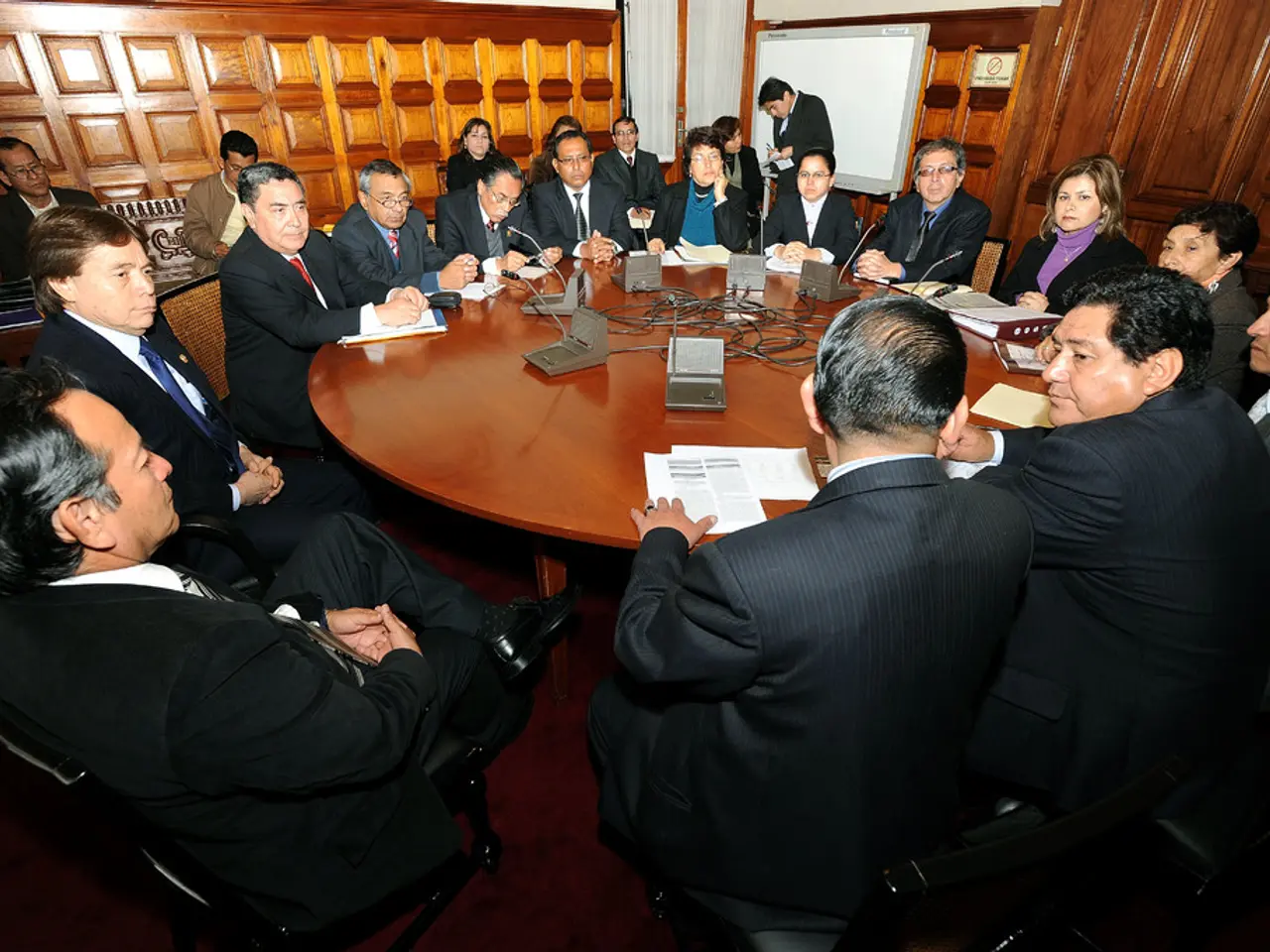Unusual Textiles: Exploring Less Frequently Used Fabrics
In 2025, the fashion world is witnessing a revolutionary shift as companies and innovators embrace engineered textiles made from algae, orange peel, and mushrooms, marking a significant step towards eco-friendly materials.
Algae-derived textiles are gaining traction for their biodegradability and minimal water usage compared to conventional fibers. Renana Krebs, founder of Algalife, pioneered this field with her company, creating breathable and lightweight fabrics that align with the focus on sustainable, comfortable fashion materials in 2025 [1].
Orange peel waste is being converted into textile fibers or natural dyes, reducing food waste and creating a circular economy. Stacy Flynn, founder of Evrnu, is one such innovator, recycling old clothing, breaking it down into liquid, and turning it into a new sustainable fiber that is stronger than cotton [2].
Mycelium (mushroom) textiles represent a breakthrough in sustainable leather alternatives. Brands like Mylo, a product of Bolt Threads, are collaborating with biotechnology firms to produce scalable fashion components. Mylo leather is biodegradable, cruelty-free, and less resource-intensive than traditional leather [2].
The Global Fashion Summit 2025 highlighted these innovations as critical for overcoming fashion's sustainability barriers, emphasizing collaboration among innovators, investors, and policymakers to drive adoption [2].
Brands like Reformation, Pact, and Outerknown exemplify the sustainability ethos by integrating eco-friendly fabrics and ethical production, although their core materials currently focus more on organic cotton and recycled fibers than algae or mushroom textiles [3].
However, the fashion industry has much catching up to do, with the challenges being multifaceted, both on the levels of consumer mindset and brand investment. Every year, 80 billion pieces of clothing are produced, with fast fashion fueling the problem [4].
The actual production of cotton has a huge impact on the environment, currently responsible for 2.6 percent of the global water we use [5]. Cheap, man-made fibers like polyester, nylon, and acrylic will end up being responsible for over 20 million tons of microfibers in the ocean by 2050 [6].
To combat this, companies like Evrnu have partnered with leading brands like Stella McCartney and Levi's, offering fabrics that use 98 percent less water than farmed cotton and all chemicals employed in the making of its fabrics are able to be reused [6].
Diamond Foundry offers consumers and the jewelry industry an alternative to mined diamonds, with diamonds grown entirely in a lab, further reducing the environmental impact of the fashion industry [7].
Real change can only be initiated when every level of the industry-from CEO to consumer-is engaged. The fashion industry is among the most polluting in the world, and 10 percent of the chemicals from textile dyeing transfers to our skin [8]. Consumers don't need to buy less, but designers and manufacturers have a responsibility to find ways to bring more environmentally sustainable solutions to customers.
References:
[1] Algalife: www.algalife.com
[2] Evrnu: www.evrnu.com
[3] Bolt Threads: www.boltthreads.com
[4] Modern Meadow: www.modernmeadow.com
[5] Orange Fiber: www.orangefiber.it
[6] Diamond Foundry: www.diamondfoundry.com
[7] Stella McCartney: www.stellamccartney.com
[8] Global Fashion Agenda: www.globalfashionagenda.com
- In 2025, the pioneering company Algalife, founded by Renana Krebs, is creating breathable and lightweight fashion materials from algae, contributing to the focus on ethical fashion and sustainability.
- Stacy Flynn, innovator and founder of Evrnu, is transforming orange peel waste into textile fibers, reducing food waste and promoting sustainability in the fashion-and-beauty sector.
- Brands like Mylo, a product of Bolt Threads, are using technology to create biodegradable, cruelty-free mushroom-based leather, aligning with the cultural emphasis on lifestyle sustainability.
- Collaboration among innovators, investors, and policymakers, highlighted at the Global Fashion Summit 2025, is critical for overcoming the challenges in achieving sustainable fashion, including the use of engineered textiles from unusual sources like algae and mushrooms.




